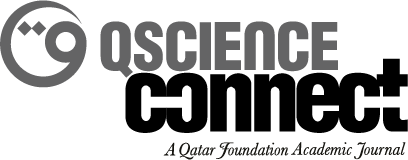-
oa Breast Lesions and their Treatment in Avicenna's Medicine
- Source: QScience Connect, Volume 2022, Issue Issue 3- Medical Humanities in the Middle East Conference, Aug 2022,
-
- 31 August 2022
Abstract
Avicenna (Ibn Sina) is Abu Ali al-Hussein, titled “Sheikh the President”. Avicenna was born in 370 Al-Hijra, (980 AD) in the village of Afshana, near Bukhara in Turkistan, or what is now the Republic of Uzbekistan. At the age of 21, he left Bukhara to spend the rest of his life travelling among various Persian cities. When he died in 1037 AD, he was considered one of the geniuses of philosophy in Islam, and in medicine he was placed in the rank of Galen, where he was called the Galen of Islam. Avicenna wrote 276 books, all written in Arabic, except for a few small books he wrote in his Persian native language. Unfortunately, most of these works have been lost, and have not reached us. There are currently 68 books scattered among east-west libraries. Avicenna’s most important book of medicine was al-Qanunn book, which is written in Arabic, and was described by William Osler, as the most famous medical textbook ever written.
Avicenna devoted a full article of the 12th art of the third book of al-Qanunn Book to talk about breast diseases; In this research, I followed a unified approach that included reviewing all the topics in which Avicenna talked about breast conditions and diseases, and then discussed these diseases according to the data of modern medicine.
Breast Injuries considered among celebrated illnesses that assault particularly females. For occasion, breast cancer assaults one among seven ladies. The point of this paper is to shed light on the accomplishments of Avicenna within the field of breast maladies which were known at that time, and to compare them with those known presently, to recognize the presence of a few components (dietary, natural, hormonal…) that take portion presently in actuating a few kinds of breast malady. Avicenna talked about Galactorrhoea, which could be a smooth emission from the breasts. The term presently ordinarily alludes to drain discharge not due to breast-feeding. It is reciprocal and from numerous conduits. Moreover, he depicted what is called presently fibrocystic breasts, which are characterized by unevenness, and as a rule distress in one or both breasts. The condition is exceptionally common presently, and kind, meaning that fibrocystic breasts are not dangerous (cancerous). Avicenna said what is called presently Incendiary Breast Cancer, which is considered nowadays as particularly forceful sort of breast cancer that can happen in ladies of any age (and, in spite of the fact that amazingly once in a while, in men). It gets its title from the ruddy, swollen, kindled appearance of the breast, as was portrayed by Avicenna.
Conclusion: Through this research we reviewed the various breast lesions, that Avicenna spoke of in his book al-Qanunn. Various chapters were reviewed, including all the breast lesions that were known at the time. These lesions have been interpreted according to our recent medical information. It is noteworthy that there is some convergence in Avicenna clinical description of some breast lesions with our current information, but Avicenna treatment methods for treating these conditions have largely differed from those currently in use.


